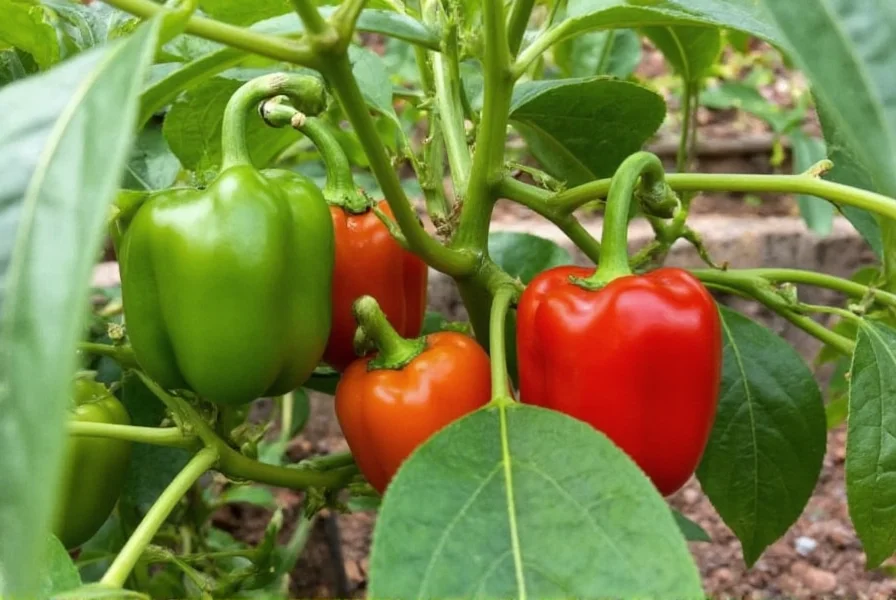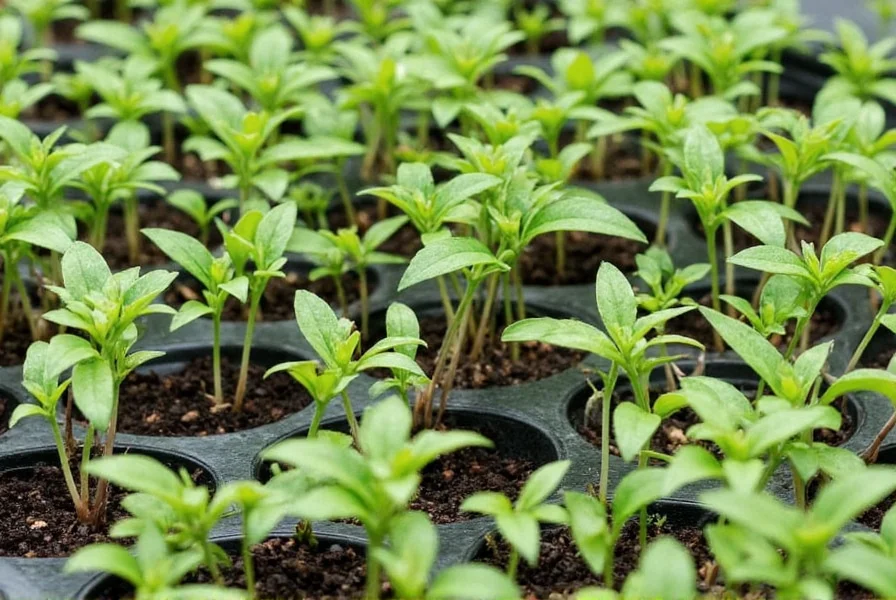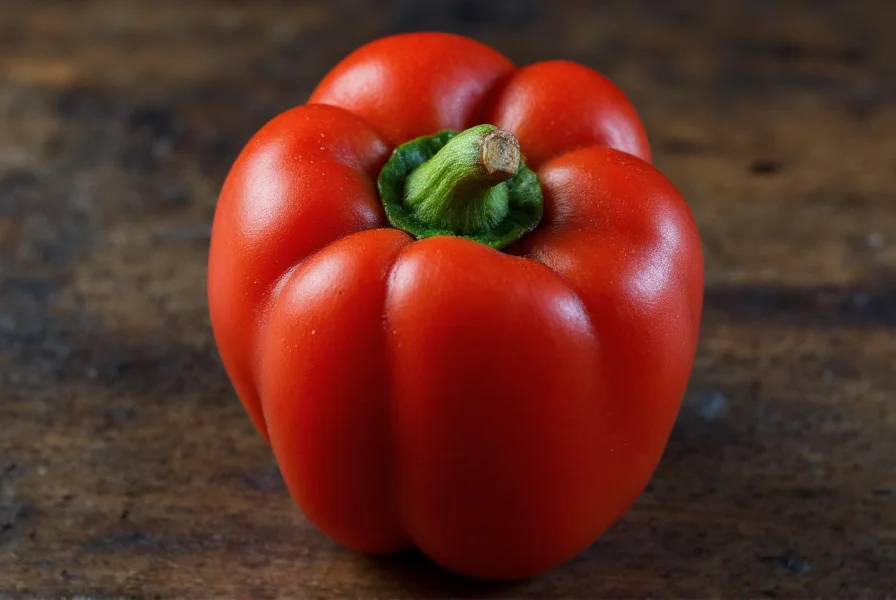When exploring unique pepper varieties for your garden, Pepper Rex stands out as an exceptional choice for home growers seeking reliable bell pepper production. This hybrid cultivar delivers consistent results where many traditional varieties might struggle, making it particularly valuable for novice gardeners and those with limited growing seasons.
Botanical Background and Development
Pepper Rex emerged from selective breeding programs focused on improving disease resistance and yield consistency in bell peppers. Unlike heirloom varieties that may exhibit genetic variability, this F1 hybrid maintains uniform characteristics across plants. Developed primarily for commercial growers but equally suited for home gardens, Pepper Rex combines the best traits of its parent cultivars to create a robust, productive plant.
The development of Pepper Rex addressed common challenges faced by pepper growers, particularly susceptibility to tobacco mosaic virus (TMV) and phytophthora blight. Through careful cross-breeding, agricultural scientists created a variety that maintains excellent fruit quality while demonstrating improved resilience against these common pepper pathogens.
Physical Characteristics and Growth Habits
Pepper Rex plants typically reach 18-24 inches in height with a compact, bushy growth habit that makes them ideal for container gardening. The plants produce blocky, four-lobed fruits averaging 3-4 inches in diameter with exceptionally thick walls that resist cracking. These characteristics make Pepper Rex particularly valuable for gardeners seeking peppers with superior storage qualities.
| Characteristic | Pepper Rex | California Wonder | Redskin |
|---|---|---|---|
| Maturity (days) | 65-70 | 70-80 | 68-75 |
| Plant Height | 18-24" | 24-30" | 20-26" |
| Fruit Size | 3-4" | 4-5" | 3-4" |
| Disease Resistance | TMV, Phytophthora | None | TMV |
Gardeners growing pepper rex bell peppers appreciate the plant's consistent fruit set even during periods of temperature fluctuation. The fruits begin as deep green and gradually transition through yellow and orange stages before reaching their final vibrant red color. This extended color progression provides gardeners with multiple harvesting options depending on their preferred flavor profile.

Flavor Profile and Culinary Applications
Understanding pepper rex characteristics reveals why this variety has gained popularity among home cooks. The thick-walled fruits offer a sweet, slightly grassy flavor when harvested green, developing more complex sweetness as they mature to red. With zero Scoville units, Pepper Rex provides pure pepper flavor without any heat, making it versatile for various culinary applications.
Chefs who grow pepper rex often note its superior texture retention compared to other bell varieties. The thick walls maintain their structure during cooking, making them ideal for stuffed peppers, grilling, and roasting. When eaten raw, the crisp texture and clean flavor make Pepper Rex an excellent addition to salads, crudités, and sandwiches.
Cultivation Requirements for Optimal Growth
Successfully growing pepper rex bell peppers requires attention to specific cultural practices. These plants thrive in full sun (6-8 hours daily) and well-draining soil with a pH between 6.0 and 6.8. Gardeners should plant after soil temperatures consistently exceed 65°F (18°C), as peppers are sensitive to cold temperatures.
When establishing pepper rex plants, proper spacing is crucial—allow 18-24 inches between plants with 24-36 inches between rows. Container gardeners should use pots with at least 5-gallon capacity and ensure adequate drainage. Consistent moisture is essential, but avoid overhead watering to prevent fungal diseases. Mulching helps maintain soil moisture and temperature while suppressing weeds.
One of the most valuable pepper rex growing tips involves nutrient management. These plants benefit from balanced fertilization, with increased phosphorus during flowering and potassium during fruit development. Avoid excessive nitrogen, which can promote foliage growth at the expense of fruit production.

Common Challenges and Solutions
While Pepper Rex demonstrates improved disease resistance compared to many bell pepper varieties, gardeners may still encounter certain challenges. Blossom end rot, caused by calcium deficiency often exacerbated by inconsistent watering, remains a potential issue. Prevent this problem by maintaining even soil moisture and ensuring adequate calcium in the soil.
Pests such as aphids, spider mites, and pepper weevils can affect Pepper Rex plants. Organic control methods including insecticidal soaps, neem oil applications, and encouraging beneficial insects provide effective management without resorting to harsh chemicals. Regular monitoring helps catch infestations early when they're easiest to control.
Harvesting and Storage Techniques
Harvesting pepper rex at the appropriate stage significantly impacts flavor and storage life. For sweetest flavor, allow fruits to fully ripen to red on the plant. Use sharp scissors or pruning shears to harvest, cutting the stem rather than pulling the fruit to avoid damaging the plant.
Properly stored Pepper Rex peppers maintain quality for 2-3 weeks in the refrigerator's crisper drawer. For longer preservation, consider roasting and freezing, pickling, or dehydrating. The thick walls of Pepper Rex make it particularly well-suited for these preservation methods compared to thinner-walled varieties.
Pepper Rex in Garden Planning
When incorporating pepper rex into your garden design, consider companion planting strategies that enhance growth and deter pests. Planting basil, onions, or marigolds nearby can improve pepper health and productivity. Avoid planting near fennel or brassicas, which may inhibit pepper growth.
Gardeners exploring pepper rex vs california wonder often find Pepper Rex's earlier maturity and disease resistance make it a better choice for shorter growing seasons or regions with higher disease pressure. While California Wonder produces slightly larger fruits, Pepper Rex's reliability often makes it the preferred choice for consistent harvests.
Frequently Asked Questions
How long does it take for Pepper Rex to mature from seed?
Pepper Rex typically reaches maturity in 65-70 days from transplanting, or approximately 85-90 days from seed. This early maturity makes it suitable for regions with shorter growing seasons compared to many other bell pepper varieties that require 75-90 days to mature.
Is Pepper Rex suitable for container gardening?
Yes, Pepper Rex is exceptionally well-suited for container gardening due to its compact growth habit (18-24 inches tall). Use containers with at least 5-gallon capacity, ensure proper drainage, and provide consistent watering and fertilization for best results when growing pepper rex in containers.
What's the difference between Pepper Rex and other bell pepper varieties?
Pepper Rex distinguishes itself through earlier maturity, improved disease resistance (particularly to TMV and phytophthora), and consistent production. Compared to varieties like California Wonder, Pepper Rex produces slightly smaller but thicker-walled fruits with better crack resistance and performs well in various climate conditions.
Can Pepper Rex peppers be grown in partial shade?
While Pepper Rex can survive in partial shade, it performs best with 6-8 hours of direct sunlight daily. Reduced sunlight may result in fewer fruits, less vibrant color development, and increased susceptibility to disease. For optimal growth and yield when growing pepper rex, full sun exposure is strongly recommended.
How should I store harvested Pepper Rex peppers for maximum freshness?
Store harvested Pepper Rex peppers in the crisper drawer of your refrigerator at 45-50°F with high humidity. Properly stored, they'll maintain quality for 2-3 weeks. Avoid washing before storage, as excess moisture can accelerate spoilage. For longer preservation, consider roasting and freezing, which preserves flavor and texture for up to 6 months.











 浙公网安备
33010002000092号
浙公网安备
33010002000092号 浙B2-20120091-4
浙B2-20120091-4